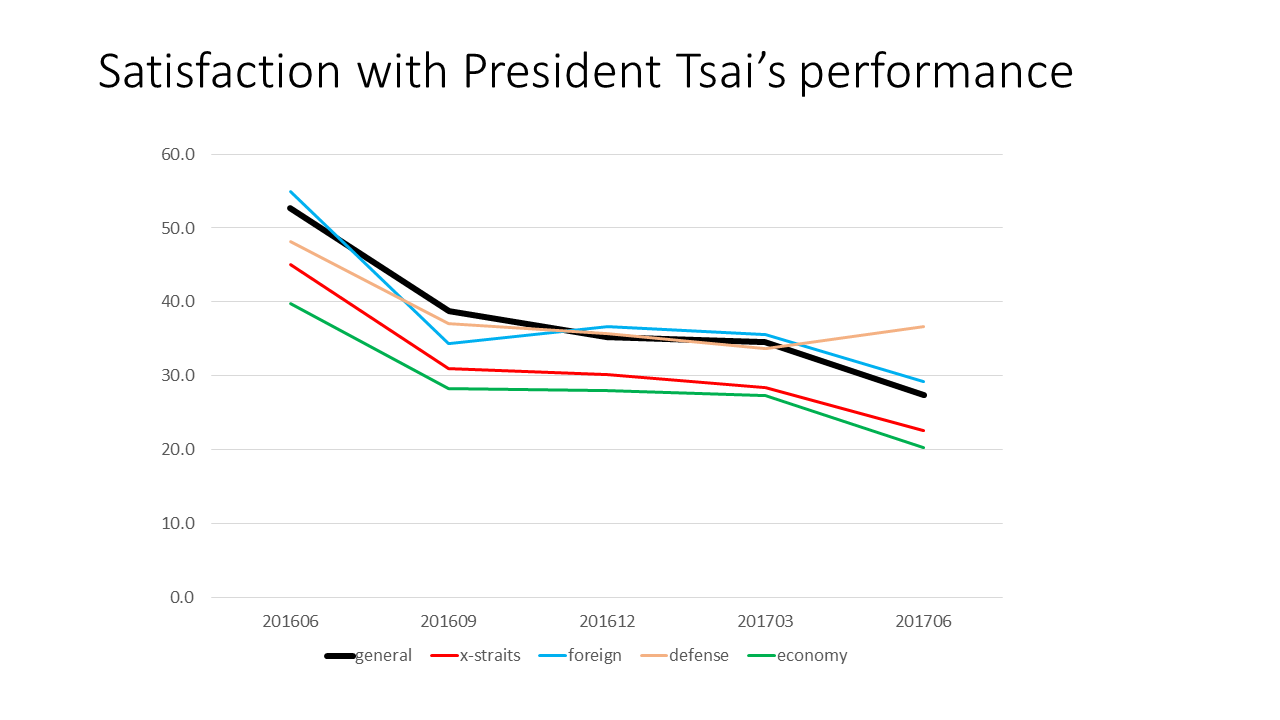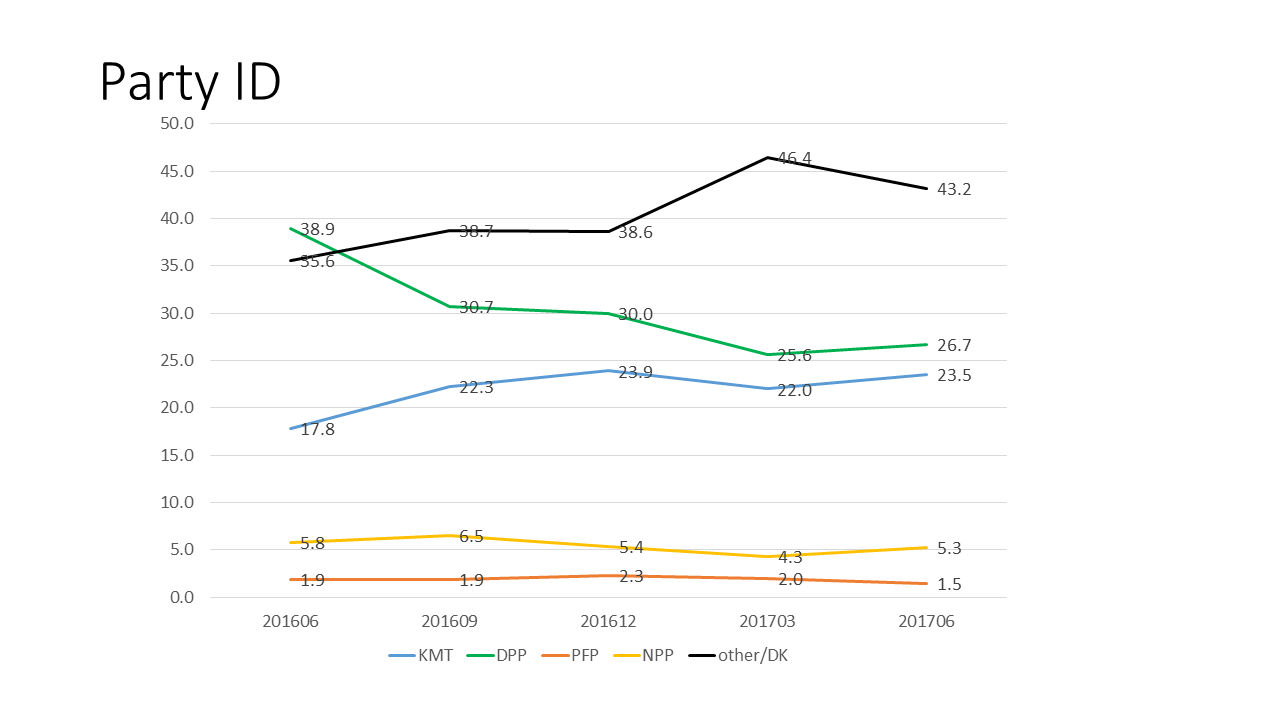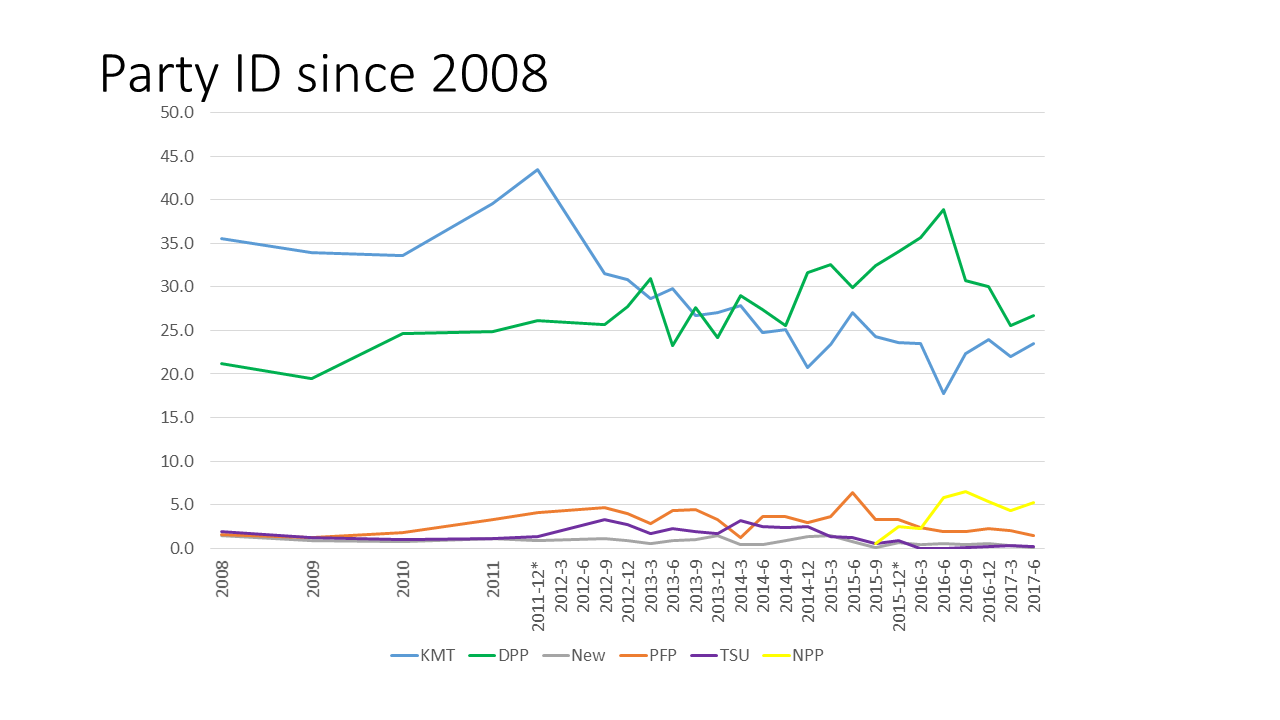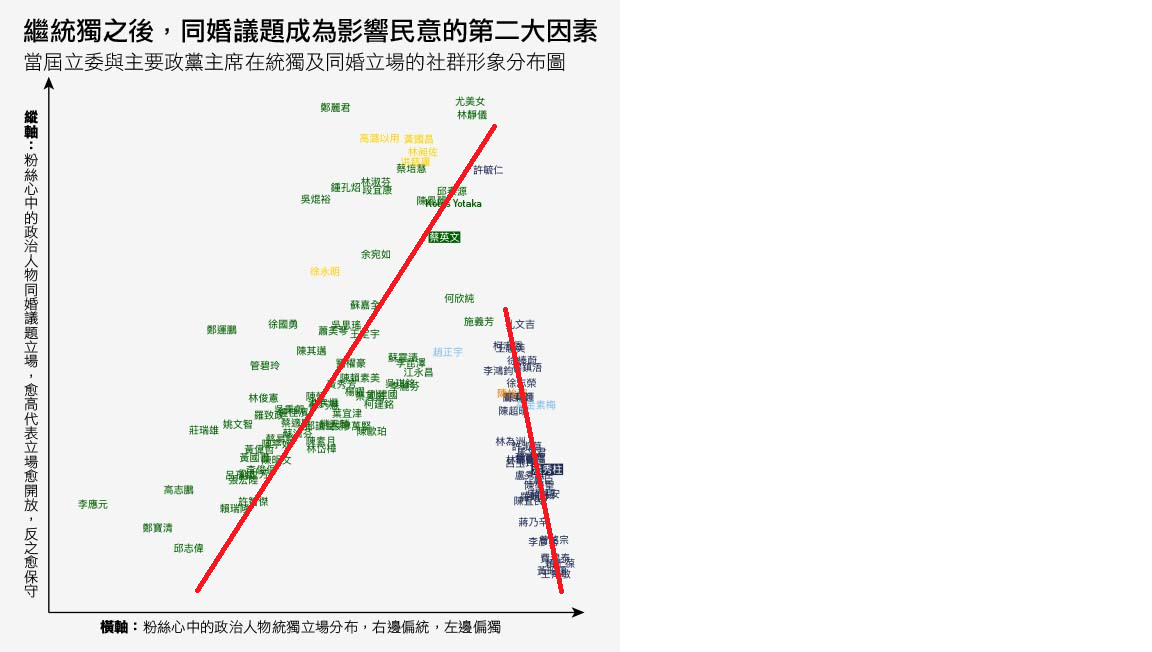My friend Dafydd Fell’s new book, Taiwan’s Green Parties: Alternative Politics in Taiwan, has been staring at me for several months. I was finally able to read it this week, and it was quite informative and stimulating. I consider myself to be quite knowledgeable on Taiwan electoral politics, but I learned A LOT about this little corner of the political spectrum. Dafydd spent about eight years working on this book, and during that time he interviewed nearly everyone in or around the Green Party Taiwan (GPT). When he tells us about the internal conflicts or soap operas, he isn’t drawing on secondhand information gleaned from actors who gave political spin to reporters. He is getting it straight from the actors themselves, usually a few months after the events in which they have had time to distance themselves from the day-to-day events. The result is as much of an insider account as you will ever find in an academic book. This is fantastic research, and if you are interested in Taiwan’s electoral politics, the Green Party Taiwan, movement parties, or what life is like inside a fringe party, you need to read this book.
Most of the book is centered around explaining the GPT’s electoral ups and downs from its founding in 1996 to the 2020 elections. A number of factors are considered, but two are identified as the most important. On the one hand, the GPT has had to find space in a political system dominated by two mainstream parties, and it hasn’t always been easy to find such space. For each election, Dafydd starts with a discussion of the party system. How has the party system (including events that shape the party system) changed since the last electoral cycle, and how did that present or restrict opportunities for the GPT? On the other hand, given the concrete space that the GPT faces in each election, how did it go about trying to take advantage those opportunities? The GPT has agency, and it has made many consequential decisions over the years. After giving the broad overview of each election, we look at individual campaigns. The GPT hasn’t nominated all that many candidates over the years, so Dafydd is able to look at a lot of obscure campaigns in quite a lot of detail. This includes not only campaigns for the national legislature, but also many campaigns for city and county council.
Now, I’ve done more work on city and county council elections that most political scientists, but even I found a lot of these campaigns to be obscure. One example that was compelling to me personally was the case of Chang Ming-li 張明麗, who in 2014 ran for the Keelung City Council, District 6. It was a four-seat district, and her 1048 votes placed her 10th out of 12 candidates. It wasn’t that close; the last winner got two and a half times as many votes as she did. The reason I know anything at all about her is that I live in this district. I have only a very vague memory of her. As with all candidates, the first question is whether to take them seriously. I think I looked at one of her leaflets and dismissed her as a certain loser. Dafydd devotes an entire page to her, concluding that she realized too late that she needed to go out and campaign and that she was actually quite good at it. If only she had started earlier! It was such a pity that she didn’t try again in 2018! Um, that might be a slightly optimistic interpretation of the result… Regardless, I rejoice in academic work that digs down into the weeds to find things that others might have neglected, and this book is a celebration of weed-digging. From all this minutia, we emerge with a rich picture of what GPT campaigns look like on the ground. And since they don’t look like KMT or DPP campaigns, this is a fresh perspective on Taiwanese politics.
The GPT’s electoral record is unimpressive. Dafydd identifies different eras as being more or less successful. So 1996-8 was better, 1999-2005 was dormant, the party re-emerged from 2006-2010, and it was close but never quite made an electoral breakthrough in 2012-2020. I think this is quite a generous reading of history. From my perspective, there is clear failure, dismal failure, and utter failure. I don’t think the GPT has ever been politically relevant in any meaningful sense. There’s a reason that pollsters almost never include the GPT as one of the options when they ask about party ID.
The book is full of stories like Chang’s, in which a candidate didn’t come particularly close to winning. In most cases, the GPT figures explain these results in terms of candidate quality. We didn’t nominate early enough, they didn’t get out of the office and go talk to voters, they didn’t work hard enough, we didn’t have enough money. One of the oldest tropes in politics is that when my side loses, it’s because we had a lousy candidate. When my side wins, it’s because we had better ideas. The GPT uses this trope quite liberally.
Another reason for the GPT’s lousy electoral record is incessant infighting. Fringe parties are notorious for internal squabbles and inability to cooperate (The Judean People’s Front!). The GPT seems to have been constantly bickering. Whenever anyone tried to do something that might win more votes, other people in the party complained that they were sellouts. There were many instances of a new leadership trying to marginalize former leaders. And proposed coalitions with other parties … well I’ll get to that in a minute. For now, let’s just say that the GPT placed far more importance on maintaining their “purity” than on winning elections.
There are numerous occasions in this book in which someone says something extremely revealing. Perhaps the most shocking instance involves Wang Hau-yu. Wang became the party leader from 2017 until he not only resigned that position but withdrew from the Green Party altogether in the aftermath of the 2020 election. Wang was unique among GPT politicians for his ability to regularly get media attention. One way he did this in the 2020 campaign was by releasing survey data on the state of the race. He claimed to have commissioned 25 separate surveys, and each time he was able to add his own spin to the resulting media reports. If nothing else, his continual presence in the media reminded potential voters of the GPT’s existence. At the time, I wondered how he was funding all these surveys. 25 surveys add up to a pretty penny for a cash-strapped organization like the GPT. One of the informants hints at an answer. According to an anonymous party insider, Wang had a secret arrangement with the DPP in which the DPP provided him with survey data. In return, Wang would attack the KMT, NPP, and TPP (p 264). In short, Wang got exposure and chances to argue against GPT rivals, while the DPP was able to outsource negative campaigning and avoid any blame. This doesn’t sound terrible for the GPT, but there’s more. In the last days of the campaign the DPP (predictably) issued a plea with sympathetic voters to vote for the DPP on the party list. One might have expected Wang – the GPT party leader – to make a counterargument that it was the GPT that desperately needed the votes. A few days after the election (in which the DPP won a comfortable majority while the GPT was completely shut out of the legislature), Wang explained why he did not do this on his Facebook page, “of course I knew that at this time the best method would be to tell everyone that the DPP was not in danger. But I did not, I could not do that. I could not put the GPT’s interests first if that meant there was the slightest possibility of there not being a [DPP] parliamentary majority and Han Kuo-yu winning the presidency” (pp 264-5). This is a stunning betrayal! If Wang thought it was most important for the DPP to get votes, he had no business at all representing the GPT! It appears that Wang was simply a DPP agent using the GPT to do the DPP’s dirty work. If this is correct, he had no business leading the GPT, and the only surprising part of his departure from the party immediately after the election is that it wasn’t more acrimonious.
Movement parties often find elections difficult. One reason for this is that social movements and electoral politics demand different priorities. For example, a labor movement might push workers to strike in order to obtain higher salaries or better working conditions, even though strikes are usually very unpopular among the general public. Movements have to be more radical; elections demand currying favor with mainstream voters. There is an inherent contradiction. However, this hasn’t been the GPT’s problem. They have been a lousy electoral party, but they’ve also been pretty lousy at movement politics. The GPT hasn’t offended mainstream voters because it was staging sit-ins on construction sites, leading marches against Formosa Plastics, protesting nuclear power plants, or engaging in any kind of civil disobedience for … anything. The GPT simply hasn’t been a radical force. When GPT members talk about their record, they point to the fact that some of their longtime positions – against nuclear power, for marriage equality – how now been accepted as mainstream. See, they’re winning! The only problem is that the GPT hasn’t had much to do with that process. In any neutral account of the anti-nuclear movement, for example, the GPT is merely going to be a peripheral actor. The other thing the GPT repeatedly stresses is their international character. They are part of the Global Green Movement! When they talk about what they do between elections, time after time they talk about attending the Global Green convention. Hooray. Forgive me for suggesting that taking a week to go on a trip to London, New Zealand, or Tokyo isn’t exactly my idea of a political movement. They are proud that they persuaded the Global Greens to pass a resolution recognizing Taiwan’s sovereignty. Ok, but when the German Foreign Minister was from the German Green Party, did he care at all about that resolution? The GPT has a party platform, but they don’t seem to do any of the hard work necessary – electoral or movement – to turn those ideals into concrete public policy. In fact, in discussing the aftermath of the 2020 election, the GPT talks about needing to rebuild its ties to social movements since they have let those wither over the past decade.
While this book is an exhaustive look at GPT leaders and candidates and their roles in elections, there is one largely overlooked actor: the voters. Does the GPT have a stable block of supporters? The GPT estimated that between 2016 and 2020, it lost about 1 million voters and gained about the same number (pp 269-71), which suggests that the GPT’s core support base is smaller than they might hope. Who is the GPT tying to appeal to? Some people suggest they should concentrate on Taipei City, while others argue they will have more success in rural areas and small cities. Are they targeting affluent people or working-class voters? Do they expect more support among young or old voters? More important than any demographic categories, how do voters think about the GPT’s issue appeals? Throughout this book, we find GPT politicians rejecting the notion that they are a single-issue party. In their minds, they are promoting a whole range of progressive positions, such as labor rights, housing justice, social inequality, good government reforms, trade policies, and national sovereignty. However, I suspect that most ordinary voters do not share such a broad image of the GPT. In a telling quote, GPT activist Robin Winkler recalls early discussions of cooperation with the SDP before 2016, “my first question [to SDP representatives] was ‘why don’t you just join us?’ They said that you’re just about the environment. I said, ‘have you read our charter?’” (p 211). If these politically sophisticated and sympathetic people – activists who were considering cooperation – thought that they GPT was merely a single-issue party, it seems very likely that most ordinary voters probably would as well. (Winkler’s reaction, that they needed to educate themselves, is also revealing. Successful parties don’t reflexively assign homework to the people they are trying to attract.) Even if most voters don’t know what the GPT stands for, are many voters open to those positions? Do the different arguments conflict with each other, attracting some voters but repelling others?
It is hard to do research on fringe parties since our standard survey data isn’t very useful for parties that have less than 3% support. Dafydd devotes five pages (103-108) to this topic, but the lack of good data means that he is only able to come up with some speculative suggestions. The only data we see about issues comes from a 2016 internet survey of 116 GPT/SDP supporters, which is very small and probably has a skewed sample (60% were students). We find that LGBT rights, environmental protection, labor right, and land justice were the top four issues for these supporters. Unfortunately, we don’t know if labor rights supporters, for example, were expressing support for the GPT, the SDP, or both. All in all, we simply don’t learn much about the GPT’s support base beyond the stories that they tell themselves. And given that we have learned that they aren’t exactly a group of professional politicians deeply embedded in their constituencies, I don’t have a lot of faith that they actually know who votes for them and why.
It is finally time to talk about the beast looming over everything related to Taiwanese politics including the GPT: national identity. National identity is impossible to ignore. China forces this issue on Taiwan, and it permeates all sorts of seemingly unrelated questions. Baseball, airline names, vaccine purchases, a trip to Bolivia, hotel development on Taiwan’s east coast, pineapple farming, national health care costs, my quest for Taiwanese citizenship: China twists them all. There simply aren’t any issues on which Taiwanese voters don’t have to think about the relationship between Taiwan and China. Decisions about how to respond to all these different questions are usually grounded in national identity. People who feel a bit Chinese tend to opt for different policies than people who don’t feel at all Chinese. National identity will continue to dominate Taiwanese politics until Taiwan’s sovereignty is settled. It is inescapable.
From one perspective, the GPT has taken a quite clear stance on Taiwan identity. Kao Cheng-yen sailed out into the Taiwan Strait in 1996 to “catch” the missiles China was firing. The TGP got the Global Greens to pass resolutions on Taiwan sovereignty. The GPT issued statements in favor of Hong Kong protesters. Isn’t all that pretty clear? Well, no. While there are undoubtedly many GPT figures with a strong stance on Taiwan identity and almost none screaming about how they are Chinese, there are hints of ambiguity. A GPT executive committee member suggested the GPT’s task was, “the GPT needs to convince the public that the GPT wants to transcend the issue of unification or independence, either way Taiwan needs to survive and have a good environment” (p 140). This person wants to play both sides; she is not interested in a clear position. An even more striking statement comes from a GPT supporter, “young people in Taiwan today, they have a good life. Young people today don’t say, ‘I want to be independent.’ They don’t think about that as much as before. We have a good life now. … If you keep shouting about independence, unification all days, people will feel annoyed. We are a country now, why do you need to keep repeating those things? (p107). I have spent quite a bit of time over the past year looking at Han Kuo-yu’s rhetoric, and he repeatedly said almost exactly the same thing (except he would have insisted that life in Taiwan is currently lousy). In the current environment, when someone insists identity is not important, it often means they simply don’t want to talk about their opinion because they know it is unpopular.
The GPT seems to know they have an ambiguous stance. GPT activists blamed their poor showings in 2016 and 2020 on a popular desire for a clearer stance on China questions after the Chou Tzu-yu incident and the Hong Kong protests. Either they don’t believe their own autopsy, or they are willingly paying a price for this ambiguous stance.
It isn’t just a question for voters. National identity is probably behind the GPT’s problems in forming electorally advantageous coalitions. In 2012 and 2016, the DPP yielded a legislative district to a GPT (or GPT allied) candidate. This should have been a golden opportunity. The GPT’s candidate was guaranteed media coverage, and the DPP was basically inviting it to make a sales pitch to its tens of thousands of local supporters. This was also an opportunity for the GPT to make contact with organizational networks and potential financial backers. However, the GPT was not able to take advantage of these opportunities. In both cases, when Tsai Ing-wen campaigned with the GPT candidate (national attention!! this is your chance!!), GPT party activists publicly revolted against any suggestion that they were endorsing her presidential campaign. In a contest between the KMT and DPP presidential candidates, they did not want to take a side (even though the DPP presidential candidate was endorsing their legislative candidate). They might have argued that their neutrality had nothing to do with national identity, but presidential elections are essentially referendums on exactly that question. The GPT might write something about sovereignty in its party charter, but very few people read party charters. These incidents got national press coverage, making it clear for all to see that the GPT was internally divided on Taiwan identity. Moreover, because of this internal division, they weren’t able to commit to an electorally advantageous alliance. They wanted to tell people to ignore identity and focus on the environment, but they were unable to take their own advice. Identity is inescapable.














